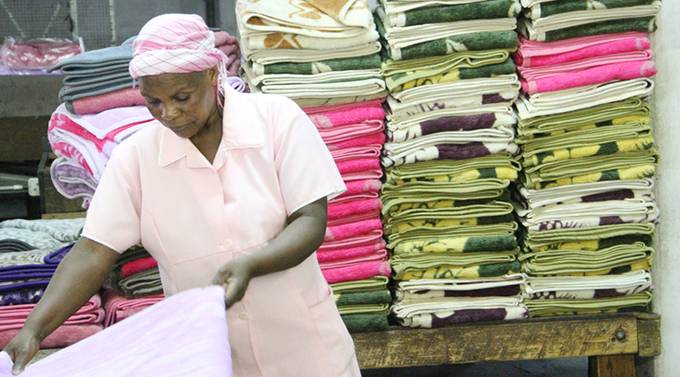Gokwe earmarked for textile and clothing hub
GOKWE District is set to be transformed into a textile and clothing hub under the ambitious Midlands Provincial Development Strategy, which aims to empower and incentivise about 400 000 cotton farmers.
The result is to see the growth of Gokwe by riding on increased cotton production and turning the district into a new provincial economic capital. The country’s cotton production is this year expected to be higher than last year following heavy rains with Gokwe set for more gains.
Most farmers in Gokwe are sponsored by the Government under the Presidential Cotton Inputs Scheme, a programme being administered by the Cotton Company of Zimbabwe, which saw farmers receiving inputs on time. Private companies have also joined in financing farmers.
“There is a National Development Strategy 1 and we are busy right now mapping our own Provincial Development Strategy so it can feed into the NDS1. We have keen interest in turning Gokwe into a third largest city in the country because of its potential as a cotton farming district,” Midlands Minister of State for Provincial Affairs and Devolution, Larry Mavima, said.
He noted that Gokwe accounted for the bulk of the cotton output, which was being grown in the country with over 400 000 farmers involved in white gold farming.
“So, you can see the potential it has. With 52 percent of cotton produced in the country coming from Gokwe, what is needed is to capacitate cotton farmers. We need to put our heads together so that becomes the clothing and textile hub, enough to become the third largest city in the country after Harare and Bulawayo,” he said.
Last month, the Midlands province set out its development priorities, which seek leverage from rich mineral resources and diverse agricultural activities in a bid to transform the province into an investment and economic zone in line with the National Development Strategy (NDS1).
NDS1 is the second step of the Second Republic’s drive to attain Vision 2030 and succeeded the Transitional Stabilisation Programme (TSP), which ran from October 2018 to 2020. The third step will be National Development Strategy 2 to be implemented from 2026 to 2030.
The TSP focused on stabilising the macro-economy and the financial sector, improving infrastructure, and laid the foundation required for economic take-off and growth.
Minister Mavima said under the Provincial Development Strategy, cotton farmers in the province will be assisted through contract farming with incentives to produce more for domestic value addition and exports.
“We already have the Presidential Cotton Input Scheme and we need to just put our heads together as a province and make sure that the cotton farming industry gets the necessary support for it to grow,” he said.
“We need to incentivise the farmers so that they increase cotton production. Yes, they have been farming for years but we need them to take cotton farming as a business for the growth of their livelihoods and that of the district.
“We have vast gold and chrome deposits in the province. The only challenge is that these mineral resources are not being formally mined.
What we have are artisanal miners in gold and in the chrome industry. We had to stop some of the chrome mining companies, which were causing land degradation. However, if all this is formalised, we have a great potential as the province,” said the minister.
Guided by the Provincial Development Strategy, he said the Midlands was also looking at improving rural service centres so they can become employment hubs.
“We have youths loitering around growth points doing nothing. We are working with the corporate world to find out ways of creating employment within those areas. The option is not to go to Gweru or Harare but to urbanise these rural service centers so people can get services right in their areas,” said Minister Mavima.-chronice..cl.zw











